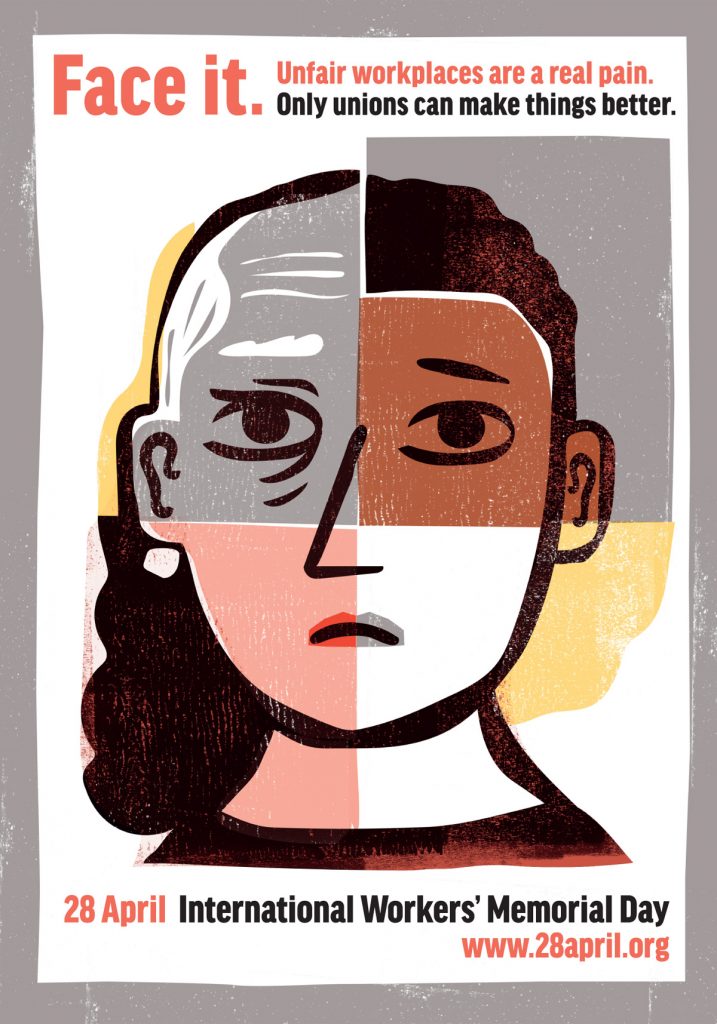 Workers Memorial Day is Friday. Events are being organized all over the world, and the AFL-CIO has just issued its 2017 edition of Death on the Job.
Workers Memorial Day is Friday. Events are being organized all over the world, and the AFL-CIO has just issued its 2017 edition of Death on the Job.
This is the 26th edition of Death on the Job. Download it and read it: it’s the bible of what’s happening in workplace safety and health in this country. It’s the most valuable tool you will find to fight the lies and myths that are being used to undermine worker safety in this country.
As might be expected, there is much work to be done. The basic facts are known — but need to be known much better: 4,836 workers were killed on the job in the United States in 2015 and an estimated 50,000 to 60,000 workers died from occupational diseases, which means that 150 workers died each day from hazardous working conditions. ,
Another 3.7 million work-related injuries and illnesses were reported, but those numbers are significantly under reported, bringing the real total to 7.4 million to 11.1 million injuries each year.
The report, based on data from OSHA and Bureau of Labor Statistics finds that:
- Latino and immigrant workers continue to be at higher risk than other workers.
- Older workers are at high risk.
- The construction, transportation and agriculture industries (private sector) remain very dangerous.
- The mining and extraction industries remain dangerous, but safety and health has improved.
- Workplace violence continued to be a growing problem for workers in 2015.
- The cost of job injuries and illnesses is enormous—estimated at $250 billion to $360 billion a year.
Meanwhile, OSHA’s resources remain far too small, penalties are still too low — although they’ve gone up — and things promise to get worse under the Trump administration. So far we’ve seen two safety and health regulations repealed by Congress, Executive Orders that will make it impossible to issue additional protections and threaten current protections, a threat to eliminate the Susan Harwood Grant program and the Chemical Safety Board, and possible significant budget cuts in other areas.
These are more than numbers; they are our brothers and sisters, and a reminder of the need to continue our fight for every worker to be safe on the job every day.” — Rich “Trumka
As AFL-CIO President Rich Trumka said regarding the release of Death on the Job:
“Instead of working for stronger protections, too many Republican politicians in Washington, including the Trump administration, are trying to roll back commonsense regulations that enable workers to return home safely to their families. These are more than numbers; they are our brothers and sisters, and a reminder of the need to continue our fight for every worker to be safe on the job every day.”
Workers Memorial Day
Which brings us to fighting back. Workers Memorial Day events will be held across the United States and the world. Find an event and make your voice heard.
In the US, events are being organized from points as far away as Puerto Rico, Washington DC and Lima, OH and events from Duluth to Bettendorf to Dubuque to San Francisco to Oklahoma City.
Federal and State Representatives, family Members of United Support Memorial for Workplace Fatalities (USMWF), Unions, Co-workers, Employers and the Community will attend Nebraska’s 8th Annual Workers’ Memorial Day Candlelight Vigil. And family members who have lost loved ones will join Philaposh in the oldest and largest commemoration in Philadelphia.
You can find all of the Workers Memorial Day events on the AFL-CIO website and the Facebook Workers Memorial Day page. And if you’re on Facebook or YouTube, check out Mark Catlin’s huge and growing collection of historical workplace safety and health videos.
Workers and unions in more than thirty countries are holding Workers Memorial Day events and can be found on the Hazards website and check out the Workers Memorial Day Twitter page as well. If you happen to be in India, Myanmar, Burkina Faso, Great Britain or almost anywhere else, stop by. Turkey is even holding its first Workers Memorial Day event.